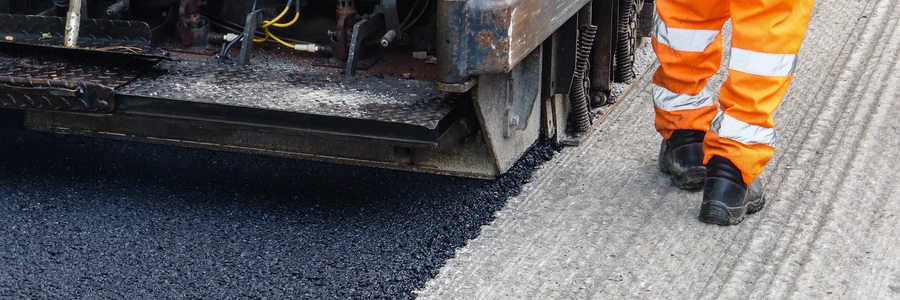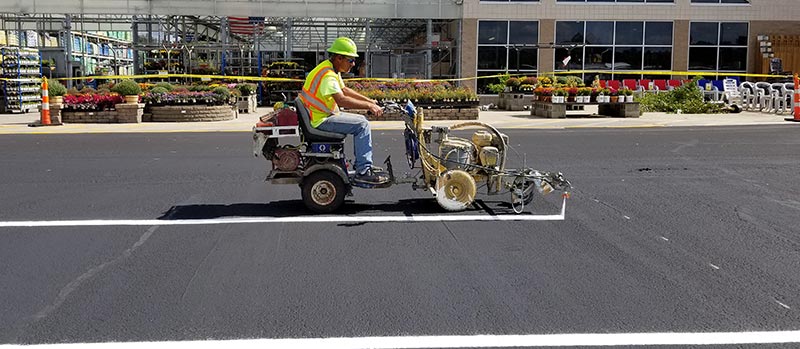Some Known Details About A1 Professional Asphalt & Sealing Llc
The smart Trick of A1 Professional Asphalt & Sealing Llc That Nobody is Discussing
Table of ContentsWhat Does A1 Professional Asphalt & Sealing Llc Do?Indicators on A1 Professional Asphalt & Sealing Llc You Need To KnowGet This Report on A1 Professional Asphalt & Sealing LlcThe smart Trick of A1 Professional Asphalt & Sealing Llc That Nobody is Talking AboutThe 6-Second Trick For A1 Professional Asphalt & Sealing Llc

The oil in a cars and truck engine is not simply oil. The REOB includes all the ingredients that were in the waste oil as well as the wear metals from the engine (primarily iron and copper).
By making numerous blends utilizing different REOB samples and different asphalt binders, the variants greatly can be averaged out. A number of States gave samples of recognized REOB structure to TFHRC scientists, who evaluated the samples to compare the percentage of included (understood) REOB to the discovered (examined) quantity. The evaluations showed an equivalent percent of included and located REOB.
The A1 Professional Asphalt & Sealing Llc Diaries
They received a frustrating feedback. The TFHRC scientists examined 1,532 samples from 40 States, one Canadian district, and two Federal Lands Freeway divisions. They analyzed each example twiceamounting to more than 3,000 evaluations. None of those States recognized that the asphalt they were buying had REOB. One State insisted its examples had no REOB.
Of the 1,532 examples checked, 12 percent consisted of REOB, and some included considerably high levels of it at 1020 percent. The highest degree was 34 percent in a sample from Texas, which TxDOT had actually utilized in a patching compound. This screening likewise disclosed the visibility of phosphoric acid in 11 percent of the samples, and 2 percent included ground tire rubber.
Two years back at TRB's annual meeting, the Federal scientists held an REOB workshop and presented the findings of their research laboratory evaluations to a standing room-only group. Some companies do not specifically prohibit REOB, they do impose physical examinations that preclude its useeffectively a ban. Others do not outlaw it by spec, but have contracts with asphalt providers to prevent making use of REOB
All About A1 Professional Asphalt & Sealing Llc
A handful do permit REOB, some within particular limitations. Ohio and Texas limitation levels to less than 5 percent of the asphalt. To create a reputable examination approach that all States can utilize, the TFHRC researchers set up a round-robin test plan. The individuals are 11 State highway companies (Illinois, Massachusetts, Minnesota, Mississippi, Montana, North Carolina, Oklahoma, South Carolina, Texas, Vermont, and Wyoming), 2 independent screening laboratories, the Ministry of Transport in Ontario, Queen's College in Ontario, and an Ontario paving professional.
In total, the researchers prepared and delivered 720 blends. The participants are examining the samples independently using the guidelines offered by the TFHRC scientists. The round-robin testing is almost finished, and TFHRC is in the procedure of collecting the outcomes. The output will certainly be a suggested AASHTO test technique that any kind of State can take on and use (a-1 asphalt).
The pavement with REOB, which lies 0.6 mile (1 kilometer) from the sidewalk without REOB, has the same subgrade, web traffic thickness, and environment. The sector of Highway655 with 5 to 10 percent REOB showed considerable splitting. In this instance, the presence of REOB was the determined reason for cracking at a reduced temperature levels.
An area of test pavement in Minnesota (MN1-4) found to consist of REOB likewise cracked too soon. The pavement performed well for the first 3 to 4 years, but after that began to crack.
Not known Facts About A1 Professional Asphalt & Sealing Llc
The examinations were not substantial, but they showed that at degrees of 6 percent or even more, the tensile stamina of the asphalt dropped substantially. At a degree of 3.5 percent REOB, the variation in the physical test techniques was higher than the result of REOB. It was tough for scientists to evaluate whether REOB was present. https://sitereport.netcraft.com/?url=https://a1asphaltpro.com.

One binder criterion considered is the difference in between the reduced temperature level vital requirements temperature for rigidity (S) in the bending beam rheometer and the bending light beam rheometer creep slope (m-value) noted as Tcritical. TC = TC (S) TC (m-value). Analysis of this criterion is still continuous. 2 independent research teams, one from AASHTO and the various other from the Asphalt Institute, wrapped up that even more research study is needed view it on making use of REOB in asphalt.
Previously, all asphalt screening gauged design buildings such as stiffness. These examinations do not show what materials had been included in the asphalt. One example received throughout the TFHRC study had a really unusual evaluation. The sample had the complying with test results: Superpave PG 64-28 with a heat quality of 67.3 Tcritical on the bending beam rheometer was 6.7 degrees Celsius.

Some Known Questions About A1 Professional Asphalt & Sealing Llc.
These results show there are weaknesses in the standard design testing protocols that may be manipulated. The manufacturer may have an economic benefit and the item passes all the standardized tests, but the product may not be valuable to making sure long-lasting performance. To resolve this issue and the growth of brand-new asphalt additives and extenders, TFHRC is starting a study program to make use of handheld spectroscopic gadgets, x-ray fluorescence spectroscopy, and Fourier transform infrared spectroscopy to make it possible for analyses to be done in the field instead than needing to take samples back to the laboratory.